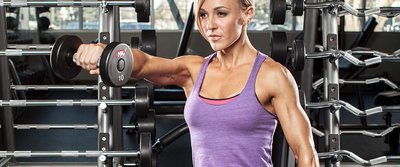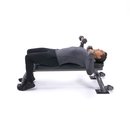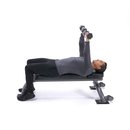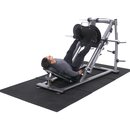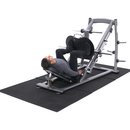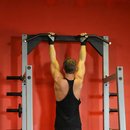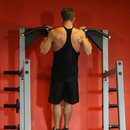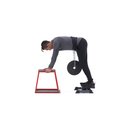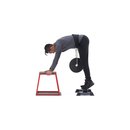So, you want to pack on some serious mass and carve out those abs? Here's a step-by-step introduction to the iron game that will get you started on the right foot.
Don't expect overnight miracles—building a body takes time, focus and consistency. The good news is that the first 6-12 months is the time when you will probably make the most dramatic gains.
However, it is important to learn proper form and basic safety rules now to make sure you don't injure yourself down the road when you're pushing heavier weights around.
Training

As a beginner, you can train more frequently than intermediates and advanced trainers. The reason is simple: as you get more experienced, you learn to push your muscles harder and inflict more damage that takes longer to recover from. Beginners, on the other hand, get sore but bounce back quicker since the muscular damage isn't as severe.
If the word "damage" makes you flinch, don't worry. It's a good thing for a bodybuilder to incur limited muscle damage, because it nudges the body to recover and overcompensate (grow) slightly to prepare for future workouts. This is what bodybuilding is all about—a continuous cycle of one-step-back, two-steps-forward, repeated over and over on a weekly basis.
With this in mind it is also easy to see why rest and sleep is extremely important, since this is the time when the body does the two-steps-forward phase.
So, instead of training each muscle group once a week, you can start with a twice a week-schedule and play it by ear from there. Furthermore, we're going to split the body into two separate days: Upper body except abs on day 1, lower body plus abs on day 2. Since we're aiming to train each muscle twice a week, this means we can do day 1 and 2 on Monday and Tuesday, for example.
Then we do day 1 and 2 again on Thursday and Friday, leaving Wednesday and the weekend open for rest and relaxation. The following week you start over on the Monday-version of day 1 and so on.
We want to learn the basics, so I'll focus primarily on classic exercises. Once we've mastered these simpler exercises we'll move up to Intermediate territory with a new focus on more complex compound exercises. At this point, it is more important to learn the form and get the right "feel" for each exercise rather than lifting as heavy as possible.
Some exercises, like lat pulls and most shoulder raises, are particularly hard to target the right muscle do the work if you use too much weight. Start easy; pick a weight you can do 10-12 strict reps with and work your way up when you've got the technique down pat. Keep track of your workouts—jot down your poundage and number of reps in a notepad or designated training log for future reference.

With exercises like lat pull-downs and shoulder raises, it can be particularly hard to make sure the target muscle is doing the work if you use too much weight.
Sample Workout Routine

BodyFit
$6.99/month- 2,500+ expert-created single workouts
- 3,500+ how-to exercise videos
- Detailed workout instruction
- Step-by-step workout tips
- Training at gym or at home
- Access to Workout Plans
- Access to Bodyfit App
- Store Discounts
Already have a Bodybuilding.com account with BodyFit? Sign In

What comes with BodyFit?

- Instructional Videos
Don't risk doing a workout improperly! Avoid injury and keep your form in check with in-depth instructional videos.

- How-to Images
View our enormous library of workout photos and see exactly how each exercise should be done before you give it a shot.

- Step-by-Step Instructions
Quickly read through our step-by-step directions to ensure you're doing each workout correctly the first time, every time.

BodyFit
$6.99/month- 2,500+ expert-created single workouts
- 3,500+ how-to exercise videos
- Detailed workout instruction
- Step-by-step workout tips
- Training at gym or at home
- Access to Workout Plans
- Access to Bodyfit App
- Store Discounts
Already have a Bodybuilding.com account with BodyFit? Sign In

What comes with BodyFit?

- Instructional Videos
Don't risk doing a workout improperly! Avoid injury and keep your form in check with in-depth instructional videos.

- How-to Images
View our enormous library of workout photos and see exactly how each exercise should be done before you give it a shot.

- Step-by-Step Instructions
Quickly read through our step-by-step directions to ensure you're doing each workout correctly the first time, every time.

BodyFit
$6.99/month- 2,500+ expert-created single workouts
- 3,500+ how-to exercise videos
- Detailed workout instruction
- Step-by-step workout tips
- Training at gym or at home
- Access to Workout Plans
- Access to Bodyfit App
- Store Discounts
Already have a Bodybuilding.com account with BodyFit? Sign In

What comes with BodyFit?

- Instructional Videos
Don't risk doing a workout improperly! Avoid injury and keep your form in check with in-depth instructional videos.

- How-to Images
View our enormous library of workout photos and see exactly how each exercise should be done before you give it a shot.

- Step-by-Step Instructions
Quickly read through our step-by-step directions to ensure you're doing each workout correctly the first time, every time.

BodyFit
$6.99/month- 2,500+ expert-created single workouts
- 3,500+ how-to exercise videos
- Detailed workout instruction
- Step-by-step workout tips
- Training at gym or at home
- Access to Workout Plans
- Access to Bodyfit App
- Store Discounts
Already have a Bodybuilding.com account with BodyFit? Sign In

What comes with BodyFit?

- Instructional Videos
Don't risk doing a workout improperly! Avoid injury and keep your form in check with in-depth instructional videos.

- How-to Images
View our enormous library of workout photos and see exactly how each exercise should be done before you give it a shot.

- Step-by-Step Instructions
Quickly read through our step-by-step directions to ensure you're doing each workout correctly the first time, every time.
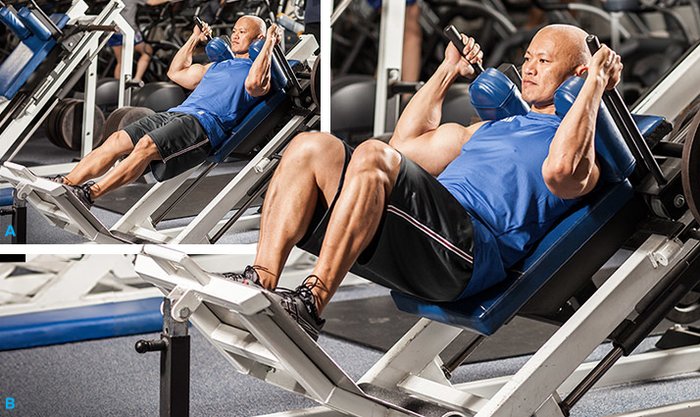
Hack Squat
Diet
To support your new, more active lifestyle, you need to review your daily nutritional intake. There is no one-size-fits-all answer to the "perfect diet", but there are some common guidelines you can use whether you're a skinny teenager or an overweight 40-something.
Cut out the junk. Really, this is your single most important step. Fast food, candy, sugary sodas and other cr@p will not only pack enough calories to turn you into the Michelin Man, it also fills you up with empty calories preventing you from getting the nutrition you really need!
Increase your protein intake. Muscle is protein, and in order to repair muscles effectively your body needs the building blocks to do so. Try to get more lean, protein-rich foods like chicken, tuna, lean beef, no-fat milk and tofu into your daily eating habits.
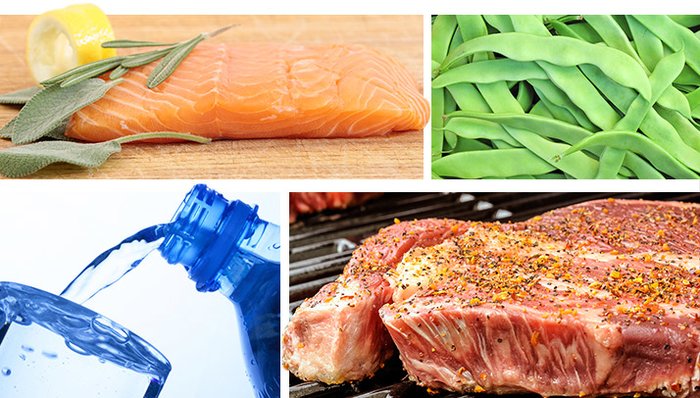
Try to divide your meals into several smaller meals rather than a few big ones.
If you're like most people, you don't eat enough fruits and vegetables each day. Unless you're big on rough bread or eat bran flakes for breakfast, chances are good you're not getting enough fiber.
This is a big mistake, as fiber is a necessity for keeping your digestive system in shape. You need a stomach that can keep up with your new, more intense nutritional needs without acting up, so make it a habit to get some type of fiber with each meal you have (except immediately after workouts).
The importance of water cannot be overstated. If you get dehydrated, your ability to function properly drops like a rock. The negative effects range from sluggishness and fatigue to headache and mental meltdown. Make sure to drink water, not coffee or soda, through the day, even on non-workout days.
Many bodybuilders make a gallon of water a day a good goal, but you probably want to adjust that number to your body size, climate and level of activity.
Try to divide your meals into several smaller meals rather than a few big ones. This will help stabilize your blood sugar levels and ensure a continuous flow of nutrients for your body. Avoid carbohydrates late at night. Carbs are your primary source of fuel for workouts, much like gasoline works for your car.
However, unlike a car you can't fill up the tank and have it stay nicely filled until morning. Instead, a big load of carbs before bedtime is more likely to be processed and stored away as body fat since there is no immediate need for the surplus energy.
To continue the car-analogy, this leaves you with a mostly empty tank by morning—but you'll have gained an extra pinch of fat. If you want a late-night snack, go for something entirely or mostly protein, since protein is unlikely to be stored as body fat and has the added advantage of providing extra "building blocks" for the time when your body goes into repair-mode, i.e. sleeps.
Calorie Counting

At this point your goals are to clean up your diet and to get in the habit of tracking exactly what goes into you on a daily basis. We'll dive deeper into strategies for gaining or losing weight in the Intermediate chapter, but let's start with establishing a baseline of sorts for yourself.
First off, get a diet log that you can bring along in your daily life. This may be another section of your training log, it can be an app on your phone, or it can be a small notepad that you carry in your back pocket.
Either way, you should have a grid with columns for when, what, and calories. If you want to make it easier for yourself down the road you can also add columns for protein, carbohydrates and fat.
Your next step is to start writing down everything you eat through the day. Keep a close watch on yourself so that you stay honest—if you have a candy bar, write it down immediately so you don't conveniently "forget" later on.
Most prepackaged food is easy to track since federal law dictates that they must have nutritional information clearly marked on the packaging. Simply copy down the numbers into your log, but beware!
Manufacturers often try to make their products seem less calorie-dense by using dwarf-sized servings. Adjust the numbers to match your real serving size. In my humble opinion, anyone who honestly considers a pint of juice to be two servings is weird.
As for non-prepackaged foods, such as fruits and cooked meals, you can buy a cheap calorie-counting book that should give you an approximation based on weight or volume. Pick ones that shows the protein/carb/fat-breakdown of different food types.
Tracking your eating patterns will help you resist junk food binges, simply because you are now forced to face up to just how many calories each such occasion really adds. Ignorance may be bliss, but ignorance certainly won't help you get ripped.
Further improve your eating habits by adhering to the basic pointers outlined earlier in this section. Simply put; clean up your diet and establish new, healthier eating patterns so that you're ready for the more advanced stuff later. Here is a basic, clean diet plan for an active weightlifter looking to pack on muscle.
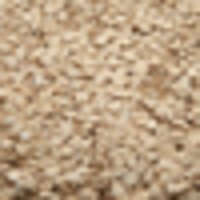 Oatmeal
Oatmeal
 Egg Whites
Egg Whites
 Banana
Banana
 Orange Juice
Orange Juice
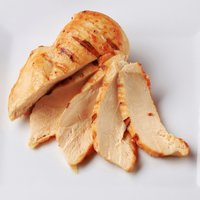 Chicken
(breast)
Chicken
(breast)
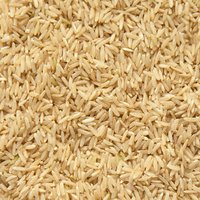 Brown Rice
Brown Rice
 Mixed Greens
Mixed Greens
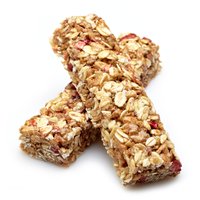 Granola Bar
Granola Bar
 Apple
(small)
Apple
(small)
 Milk
(skim)
Milk
(skim)
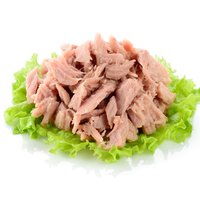 Tuna
Tuna
 Apple Cider
Apple Cider
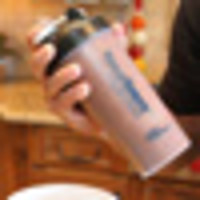 Protein Shake
Protein Shake
Supplements
Sport supplements can be a great aid in your efforts. Not only can smart use of supplements ensure you get enough of all nutrients you need to function well, you can even give yourself an extra edge in terms of strength, recovery speed and injury prevention.
However, navigating the seemingly endless list of supplements with the most fantastic claims can be challenging for experienced bodybuilders and daunting to beginners.
What works? What is just hot air and marketing baloney? And once you have figured out which products actually work, what brand do you pick? Do you go for the bargain from the company you've never heard of and risk getting disappointed, or do you go for the big name brand and get fleeced?
These are all valid questions and will be dealt with in due time, but let's start simple. As a beginner, you only have two real must-haves in terms of supplements. In a perfect world you don't even need that much, but in reality it is very hard to get what you need from regular food alone.
I am talking about the two fundamental bodybuilding supplements: Multivitamin/mineral tablets and some type of supplemental protein.
Multivitamin/Mineral Supplements
This is the most basic—and most important—supplement in your arsenal. Your body needs all its daily vitamins and minerals to function optimally, and unless you spend some serious time planning and preparing every meal of the day while ensuring no nutrients are destroyed through cooking, you need to take a supplement.
It's not very exciting, but if forced to pick only ONE supplement, this should be your choice. Multivitamin/mineral supplements can come in the shape of liquid, hard tablets, powder-filled capsules or even in "packs" with a whole bunch of pills and capsules. The shape you prefer is up to you, but be careful if you go for the hard tablet approach.
Some tablets are so hard they do not dissolve fully in your stomach and never give full benefit before they exit your system. It is wise to test hard tablets by placing them in warm (not hot) vinegar for 30 minutes or so. If the tablet is dissolved or at least mushy, it's Ok, but if it's still hard as a pebble you may have a dud on your hands.
There are hundreds, if not thousands of brands that offer multivitamin/minerals. Go with a decently priced option from a reputable company. The important thing to look for is that you all or most of the RDA of all vital minerals and minerals.
You will find that manufacturers differ somewhat in the composition of their products, but don't sweat it as long as you get close to or all you need of all vitamins and minerals. Take your vitamin/mineral supplement with breakfast to make sure you remember it.
Protein Supplements
The main purpose of getting a protein supplement is to provide more "building material" for your muscles. As mentioned earlier, muscle tissue requires protein to repair itself and grow, so your diet needs to reflect this increased need for protein. However, it is often hard to get enough protein through regular foods throughout the day.
This is where the supplemental protein comes into the picture. The most common form of protein supplements is a simple powder that you mix with water or milk in a shaker or blender, but you can also buy pre-made drinks and protein-rich sport bars (not to be confused with sugar-packed energy bars). Heck, you can even buy protein-enriched pasta and other foods. For now we'll discuss plain powder.
There are three basic types of protein powder, though the lines have gotten blurred in recent years. The formulas are:
- Gainers: Powders with tons of carbohydrates to go with the protein. Very calorie-dense and suitable for naturally skinny people who have problems eating enough to gain weight.
- Meal Replacement Drinks: Relatively balanced protein/carbohydrate content with a moderate amount of calories. A handy product for when you need to eat but don't have time to prepare a real meal.
- Pure Protein Drinks: Little or no carbohydrates, all protein. Low calories; a 40 grams-of-protein serving can have 200 calories or less, making it an excellent choice for naturally chunky people who want to keep calories low while getting the protein they need.
If you're a skinny person who can't eat enough calories through regular food, buy a gainer and try to chug as much as you can between meals. As the name implies, the meal replacement drinks are suitable when you're on the go and don't have time for a real meal.
Last but not least, pure protein drinks can be taken as part of a snack, to boost the protein content of your breakfast, or right before bed as a way to give your body some extra help in growing.
Regardless of which type of protein drink you buy, be sure not to get into the habit of skipping meals in favor of drinks. Supplements are only supplements; your main source of nutrition should always be good, healthy food!
Tips & Tricks
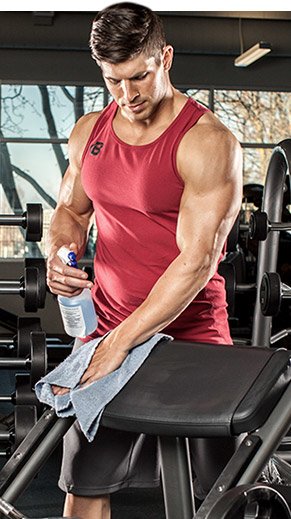
Coming into a new environment is always a challenge. There are concepts and unwritten rules that everyone except you take for granted. Don't worry, you'll get the hang of things in no-time.
When you choose a gym, make sure to pick one that you feel comfortable in. Take your time—walk around, look at the machines, see how packed the place is and what type of people go there. Also check so that it is within reasonable driving distance. If you have to drive 30 minutes each way, chances are you'll start looking for excuses not to go.
Get the gear you need. A clean, loose T-shirt, knee-length shorts and indoor-only sneakers are a good start for clothing. You also want to bring a padlock, a bottle of water and a small sweat-towel. If you intend to shower at the gym, don't forget a full-size towel, fresh underwear and shampoo. You can also get optional things like gloves and lifting straps or hooks, but you may want to start without to assess what your needs are.
If you're unsure about the exercises, hire a personal trainer to make sure you get started on the right foot. The key to progress and avoiding injuries is getting the grooves right, and you might as well learn everything right from the start so you don't have to "unlearn" later. Many gyms offer a couple of free sessions with a trainer when you sign up—take advantage of it!
Learn the gym etiquette. Let others use your machine between your sets, wipe off your sweat from machines and pads, unload the plates when you're done and don't start yakking with people in the middle of their sets. Leave the pager and cell phone in the locker. And check your personal hygiene—nobody likes the guy who smells like a donkey.
Make sure to get plenty of sleep. You do most of your growing in bed, not in the gym, so don't rob yourself of growth by skimping on the z's. Another obvious advantage of getting sufficient rest is that you're more energized and can train harder, which in turn improves the result of your workouts. A sleep-deprived person, on the other hand, is worn out even before stepping into the gym. Such a person can even get himself injured because of the lack of mental focus.
If your gym is too crowded, consider a different workout schedule. Since everybody is in the gym at 5 PM on Mondays, perhaps it is better to schedule your workout for 8 p.m.—or 7 a.m., before work. Or better yet, go on Sunday afternoon when the weekend warriors are busy drinking beer and watching sports and make Monday a rest day.
Remember, your body couldn't care less what day of the week it is, so adjust your schedule to what's most convenient. One caveat: Try to get your weight lifting in when you're feeling the most energized. Morning people usually have no problems with early workouts, but night owls probably benefit more from a late evening workout, and vice versa.
Safety Pointers
As a beginner, your goal is to learn to lift right, not lift a lot. In addition to getting the basic movements right, there are some universal safety pointers you should keep in mind to decrease the odds of injuries now and later.
Hire a personal trainer or get a regular workout buddy to spot you for exercises that make you vulnerable to injuries. Examples of such injuries are bench presses, squats (will be introduced in the Intermediate section) and most types of overhead shoulder presses.
There are several advantages; a person who knows you can judge when you need and do not need a helping hand, he knows how strong you are and how much help to apply, and last but not least, you don't have to grab any bozo off the floor that could have the attention span of a French poodle.
Avoid overstretching joints like the plague. Getting a full range of motion during a set is good, pushing a joint beyond its natural limitation is asking for trouble. In most cases it's not even a conscious action.
A classic example is seated leg curls, where you regularly see people push through their set only to remain seated for a few seconds afterward. Their hamstrings are on fire, so they relax the muscles and take a few breaths before getting up. No harm in that, right? Wrong—the entire workload is putting brutal pressure on their knee joints without virtually any muscular support whatsoever.
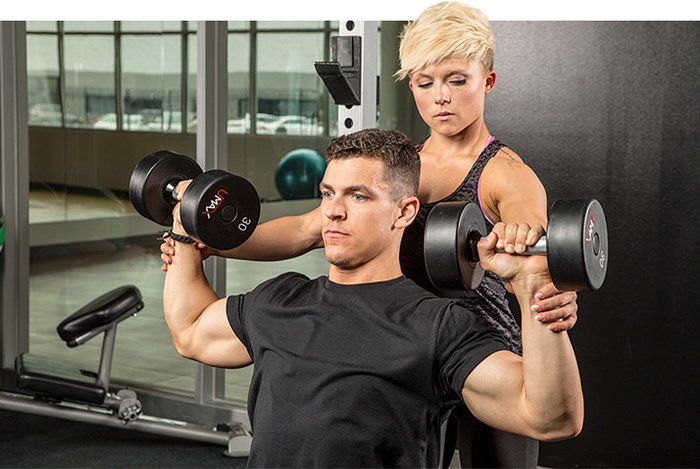
Focus and persistence are crucial to bodybuilding success.
Of course, it doesn't cause any direct pain so people don't recognize this as a problem until the day when they've worked themselves up to a weight when something snaps. Then you have plenty of pain to go around. This applies to elbows, wrists, shoulders and practically any joint you have.
If you do calf presses in a classic leg-press machine, always leave the safety stops engaged. They won't interfere with your calf presses, but if your soles slip off the plate you'll be very, very glad you did. Otherwise you'd have a few hundred pounds of plates with a sharp metal edge and a one-way ticket to your kneecaps.
Learn to flex your abs and maintain a tense midsection at will. This helps stabilize your torso and can do wonders in avoiding undue strain on your back. Remember, avoiding injuries is a key step to long-term bodybuilding success. Make it a habit to always tense up your abs while curling, pressing or pushing weights, especially for overhead exercises such as military presses.
Don't forget to employ proper lifting technique (straight back, knees bent and abs tense) when loading and unloading weight plates. Just because it's not a regular exercise doesn't mean you can ignore safety when dealing with 45-pound plates. Also check your grip. If you get sweat on your hands you have potential toe-crusher going if you try to unload the plates without wiping your hands first.
Some people like to use overhand "monkey grip," i.e. hold the bar with the thumb on the same side as the other fingers rather than grasp around the bar. This is a bad idea for two reasons. When bench pressing, you're forced to tilt your hand back all the way to avoid having the bar roll out of your palm and decapitate you.
Unfortunately, this means you'll have bone pressing against bone in your hand/upper arm, which can become quite painful if you make it a habit. Secondly, there's that tiny detail of having a 200something pound barbell suddenly coming down to get more closely acquainted with your front teeth. This is a pretty memorable event that could leave a deep impression in you.
The Mental Game
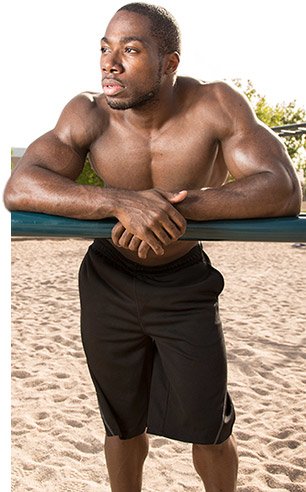
Work, family commitments and plain ol' laziness are parts of life that will tug you away from your scheduled gym session. Don't get me wrong, your kids' school play is important, but there's a big difference between making a rare exception and routinely letting your workouts slip down the priority list.
As stated many times before, focus and persistency are crucial to bodybuilding success, so here are a few tips on how to get your mindset right.
Your first step is to define a long-term goal in as specific terms as possible. "Getting in shape" is not good enough. What exactly are you looking for? Gain weight in the form of quality muscle? Lose fat? How many pounds up or down are we talking about, specifically? Increase your strength? In that case, by how much?
The goal is to establish exactly where you want to go and how you will measure your success. Make a realistic assessment of how long this should take and write down to the target date. Being a beginner this may be hard to estimate, but make your best guess and allow for some wiggle-room if your guess was off target.
Once you have your goal and your timeline defined, establish a number of milestones, say a month apart, that you can use as checkpoints to make sure you're on track. This helps make the end goal less daunting, since adding 10 lbs to your bench press by next month is within your reach while adding 80 lbs by April can feel far-fetched and discouraging. As an extra incentive, you can give yourself a little reward when you hit your target.
Another important part of the mental game is positive thinking. It's a cliche for sure, but that doesn't make it any less valid. If you go into a diet thinking you won't lose a pound, guess what? You'll probably find yourself gobbling down pizza and beer within a week. Fortunately, it works the other way around too.
Arnold was a hugely successful competitor, not only because of his legendary grueling, daily workouts, but because he willed himself to victory. In his mind he had already won before he set foot on stage, and as history show that is exactly what happened, time and time again. You can use this technique to make sure your daily life falls in line with your bodybuilding plans.
Close your eyes at the start of each day and think through how you want it to play out. Walk through your healthy meals one by one (visualize how you will pass on the donuts at the meeting), when you'll go to the gym, what you'll do during the workout and how it will feel, and finish by how you'll get in bed at a reasonable hour for your full night's sleep.
The more detail you can get in there, the better. Repeat whenever you are faced with temptation, delays or anything else that could make you deviate from your plan. You will find that the more you run through the ideal day in your mind, the more like it your day-to-day life will become.


